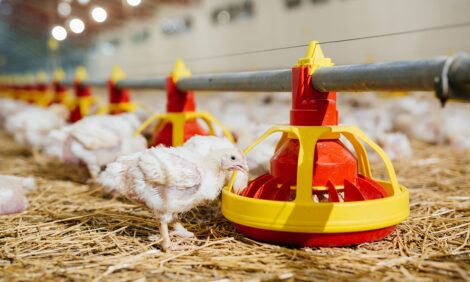



Cutting feed costs could be causing long-term challenges
Learn how to balance good nutrition with productivity when feed costs are highFeed costs are one of the biggest expenses on a poultry operation and costs of corn and soybean continue to reach record highs. When costs of production increase, many producers look to feed to cut costs. But before adjusting rations to save money in the short-term period, it’s important to consider the long-term effects those decisions could have on the performance and profitability of your flock.
The poultry industry’s understanding of how management and nutrition affect performance has greatly increased. Leveraging that knowledge can help you make better management decisions to balance good nutrition with productivity when feed costs are high.
Better management and nutrition.
Two management innovations provided opportunities for greater advancements in the poultry industry. The first was the enclosed drinking system, which saved producers time and reduced the spread of disease. The second was environmental-controlled poultry housing that keeps the birds in optimal growing conditions every hour of the day.
The improvements in water quality and overall environmental conditions helped improve the birds’ overall health, allowing additional improvements in nutrition to be more effective. Before the environmental improvements were made, changes in nutrition were less effective in increasing productivity. Once those management changes were implemented, however, the industry turned its attention to other areas, such as gut health.
In recent years the industry has improved the understanding of how a bird’s gut health, or microbiome, impacts its performance and overall health, as well as how that microbiome is impacted by environmental stressors. Nutritionists can now go into a complex to identify specific challenges the birds may be facing and provide solutions and products to address those challenges, improve gut health and boost performance.
A strategic approach to maintaining productivity.
When corn and soybean prices rise, producers may face difficult decisions to keep feed costs at a manageable level. Since corn and soybeans are difficult to replace in rations, removing supplements to reduce cost per pound of feed is a common response to this scenario. However, this approach can be short-sighted and may not take into consideration ultimate long-term goals to increase value per pound of meat or protein. In most situations, once those products are removed from the ration, performance typically declines and cost per pound of meat may not improve.
A more strategic approach to maintaining productivity with high feed costs is for poultry producers, nutritionists and managers to evaluate the mode of action of all products as well as the primary and secondary benefits they provide.
Products like CERTILLUS™ and CELMANAX™ target pathogens in the bird’s gut and support improved microbiome health and performance. Pulling these products may produce a short-term gain, but it’s also likely to result in a long-term loss in performance and profit.
If these products are fed over time and the birds develop a healthy microbiome, the products could be removed without immediately impacting performance, as long as the birds aren’t immediately under a high pathogenic challenge. However, the birds’ gut health will start to shift in the other direction once the products are removed, and long-term feed conversion and performance will decrease—meaning more time and money will be invested in the long run to regain a healthy microbiome.
The industry’s understanding of gut health and poultry nutrition has come a long way, shaping management decisions with the knowledge we now have. We know that when commodity prices increase, it’s better to focus on improving performance factors that will improve price per pound of meat than impact long-term goals with short-term tactics.
Contact an ARM & HAMMER™ representative to learn more about alternative strategies to combat rising feed costs.








